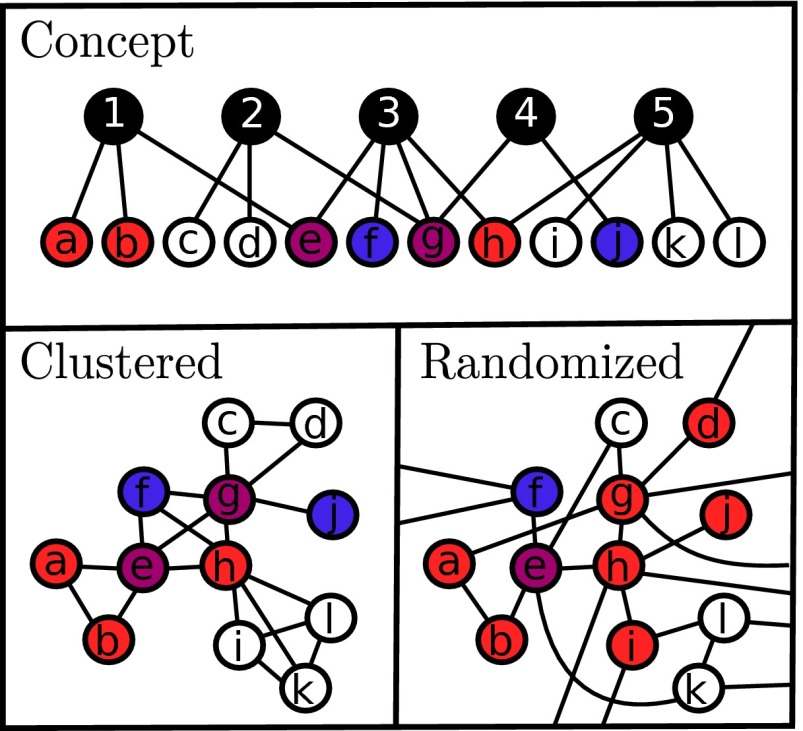Fig. 1.
The effects of clustering on disease propagation (18). Schematization of the network topologies studied in this paper: we start with a random assignment of nodes to groups (Upper), from which we obtain a highly clustered network (Left) that can then be randomized for comparison (Right). The random network is obtained by randomly rewiring the clustered network, thereby preserving node degree. This rewiring allows the diseases to reach more nodes, but separates their paths of spread, lessening the effects of the synergism. In this cartoon, red and blue nodes correspond to individuals infected with a single disease, whereas purple nodes are coinfected.

